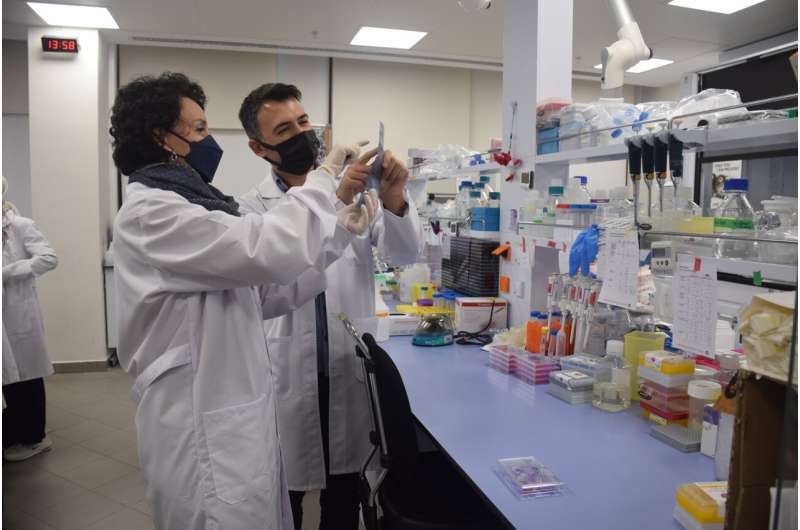The mechanisms behind cancer cell resistance to TRAIL treatment

Researchers at Koç University discovered why a promising class of cancer treatments fail, and their findings point to how such treatments might be made to work. The research revealed the mechanisms behind the development of resistance by cancer cells to TRAIL, or tumor necrosis factor-related apoptosis-inducing ligand. As reported in Oncogene, the scientists showed that combining TRAIL with proteasome inhibitors, drugs that block the action of cellular complexes that break down proteins, can overcome this resistance, opening up new avenues for cancer treatment.
TRAIL has generated interest as cancer therapeutic, said principal investigator Tuğba Bağcı-Önder, a professor in medicine at Koç University, "because it could induce apoptosis, aka programmed cell death, in tumor cells, while sparing normal cells."
Due to its selectivity for malignant cells, TRAIL has been in clinical trials for years, sometimes by itself and sometimes along with other drugs. These investigations, though, have never proved successful. One reason could be that not all cancer cells exposed to TRAIL die. Another possibility is that cells subjected to TRAIL treatment for a long enough time develop resistance, leading to tumor cells on which a TRAIL-based therapeutic has no effect.
The Koç University group ran a long series of experiments to uncover how this resistance comes into being. They started with cell lines of glioblastoma, a malignant brain cancer very resistant to conventional therapies. The researchers worked with glioblastoma cell lines that were initially TRAIL sensitive. They then subjected the cells first to a low dose TRAIL treatment, took the surviving cells, allowed them to multiply, and then exposed them again to TRAIL at a slightly higher dose. They repeated this procedure several times.
This process of slowly rising the TRAIL exposure level continued for about six months. According to Bağcı-Önder, this long and sustained effort succeeded despite the pandemic, her own battle with cancer, and other setbacks, due to the dogged work of the paper's lead author, post-doctoral researcher Ahmet Cingöz.
After a half-year, the scientists had cell populations with consistent TRAIL resistance, a state that persisted long after the removal of the tumor cell killing agent. The investigating team used these cell lines in further studies to decipher the mysteries behind TRAIL resistance. Genetic sequencing of resistant and sensitive cells indicated that changes in inflammation signaling may play a significant role in acquiring resistance. This information could lead to new treatment strategies.
The researchers then found that proteasome inhibitor Bortezomib overcame TRAIL resistance while other classes of drugs did not. So, one therapy would be to use the right helping agent, a proteasome inhibitor, along with TRAIL.
An unexpected discovery was that the change of a cell line from a TRAIL-resistant form into a TRAIL-sensitive version or vice versa was an all-or-nothing transformation. Bağcı-Önder said that the cells seemed in one of two locked states, switching from sensitive to resistant, for instance, and then remaining stuck until the right push to switch back came along.
Summing up the group's findings, she said they provide essential understanding about what happens to glioblastoma when treated with TRAIL, and the information from the research could prove crucial in further studies or in getting this therapeutic agent to work. Since investigators have already tried TRAIL and it failed, scientists have largely put it on the shelf. With this new research, TRAIL may make a come-back. If successful, TRAIL could prove a potent cancer-fighting weapon, one that might destroy the malignant cells even when they're in a dormant state.
"With TRAIL, it's almost as if the tumor cells are ready to die," Bağcı-Önder said.
More information: Ahmet Cingöz et al, Generation of TRAIL-resistant cell line models reveals distinct adaptive mechanisms for acquired resistance and re-sensitization, Oncogene (2021). DOI: 10.1038/s41388-021-01697-6




















